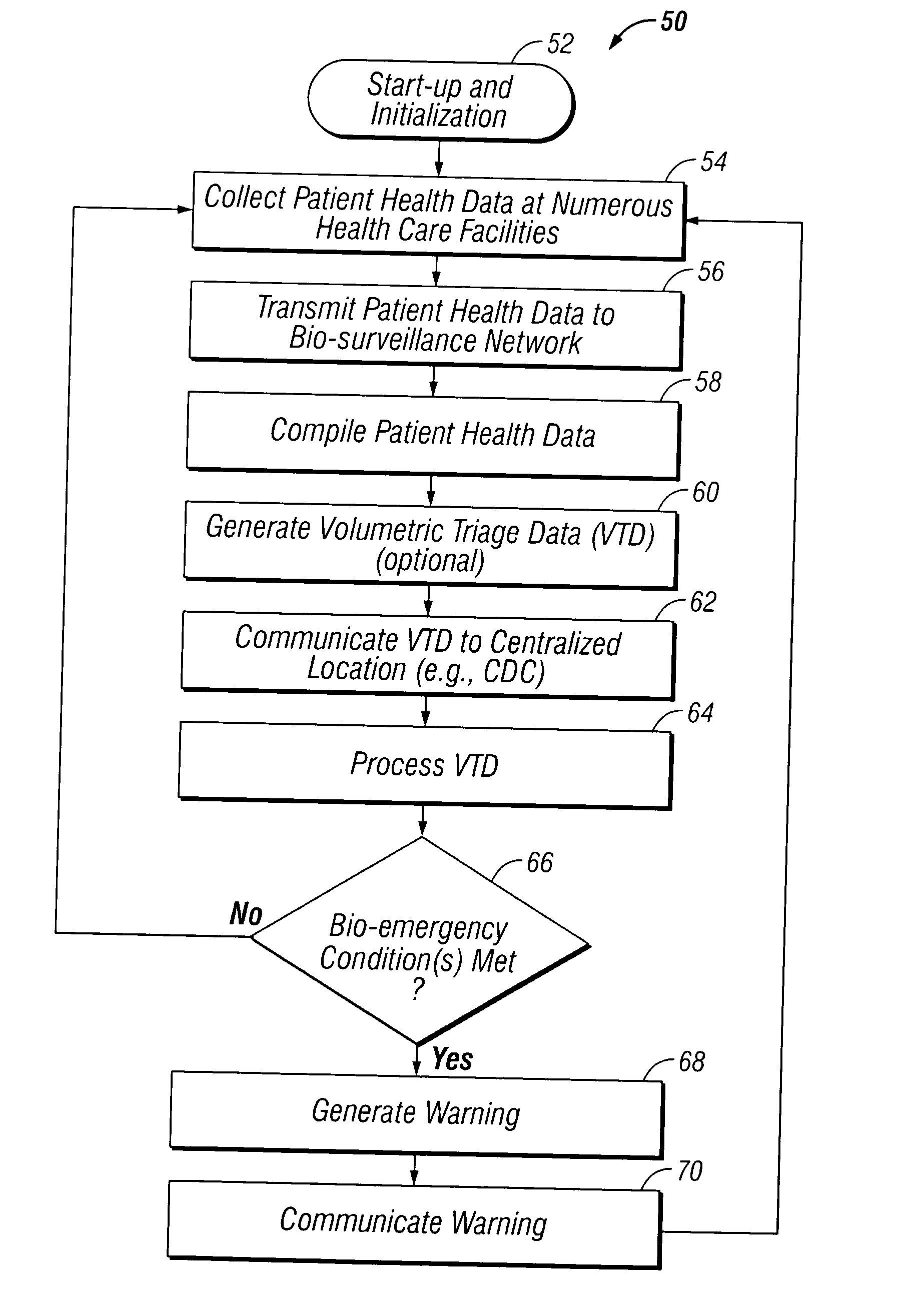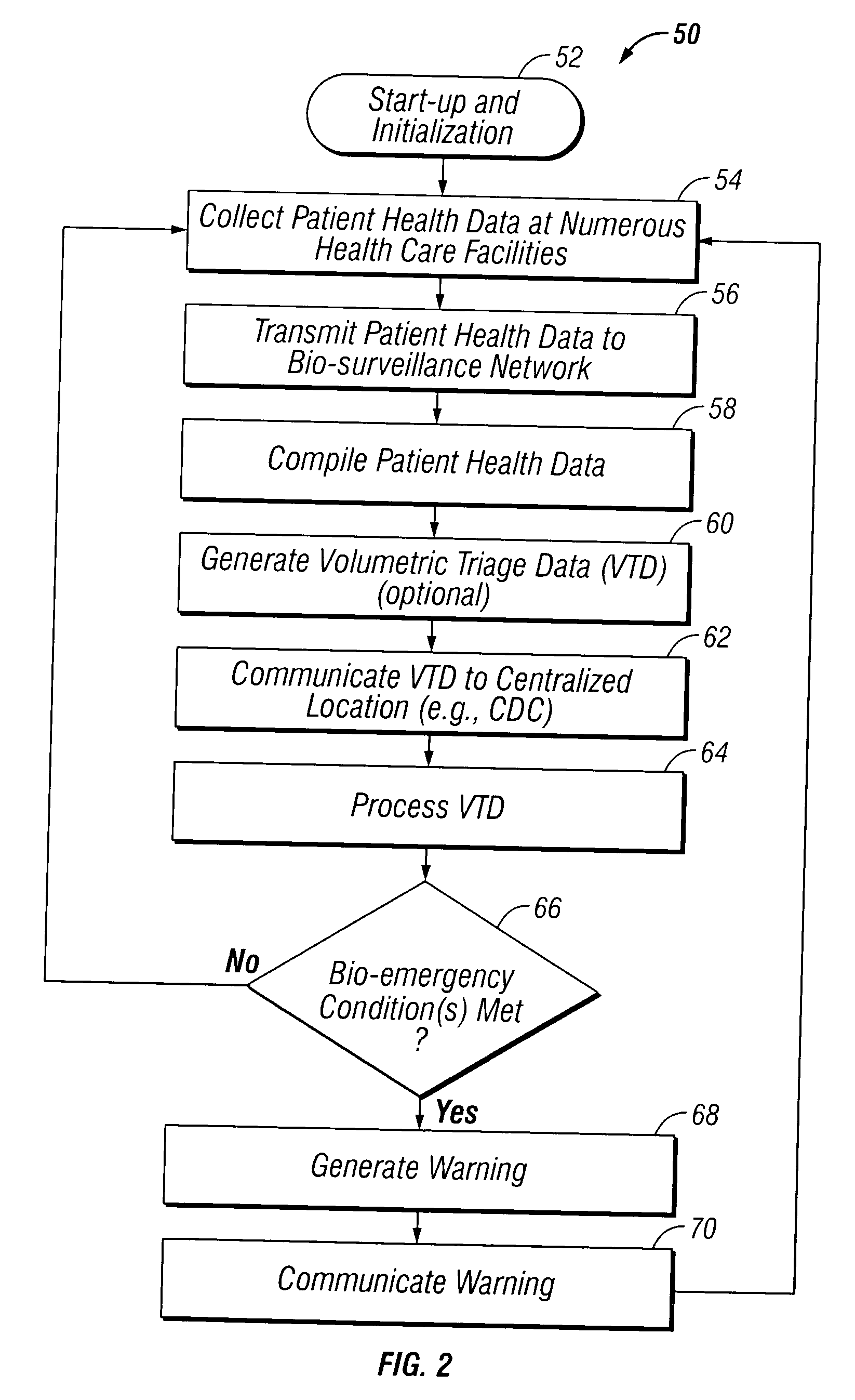Bio-surveillance system and method
- Summary
- Abstract
- Description
- Claims
- Application Information
AI Technical Summary
Problems solved by technology
Method used
Image
Examples
Embodiment Construction
[0045] A non-limiting example of the manner in which the process method of the preferred embodiment is implemented is described. First, as a member of the health care personnel (e.g., a nurse) approaches a computer terminal in the triage bay of a hospital emergency room or similar institution, the individual enables the data entry process by, e.g., pressing a button on a contextual digital assistant (CDA). In response, system 10 responds by prompting the user to respond to a challenge question presented on the computer terminal by the CDA. The challenge questions are programmed into the CDA when that CDA is assigned to preferably, the challenge question is one that the user knows the answer to, and will never forget, and is unknown to others. Of course, the CDA can hold several questions and answers, which are presented to the user in a random order each time they use the computer terminal, which provides a further level of security. As a result, the culmination of an individually r...
PUM
 Login to View More
Login to View More Abstract
Description
Claims
Application Information
 Login to View More
Login to View More - R&D
- Intellectual Property
- Life Sciences
- Materials
- Tech Scout
- Unparalleled Data Quality
- Higher Quality Content
- 60% Fewer Hallucinations
Browse by: Latest US Patents, China's latest patents, Technical Efficacy Thesaurus, Application Domain, Technology Topic, Popular Technical Reports.
© 2025 PatSnap. All rights reserved.Legal|Privacy policy|Modern Slavery Act Transparency Statement|Sitemap|About US| Contact US: help@patsnap.com



